Universitas Oxoniensis // I love the way it looks, but I have no idea what it means...
What you wear has MEANING!
Realizing that whenever I wear a brand’s logo or a crest of any kind, I may be inadvertently answering 3 questions some people have as they approach me. (Please try to remember some people.)
Where are you from?
What do you represent?
Where are you going?
Universitas Oxoniensis is Latin for The University of Oxford.
“Dominus Illuminatio Mea”, also Latin, has been the University’s Coat of Arms since the 1400s. Here are some examples of their coat of arms on a few shirts:
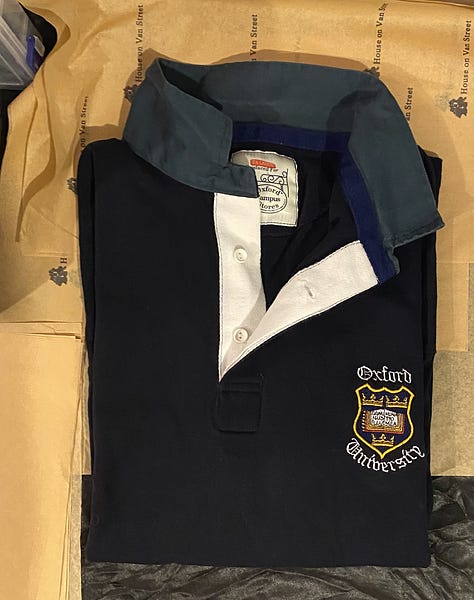





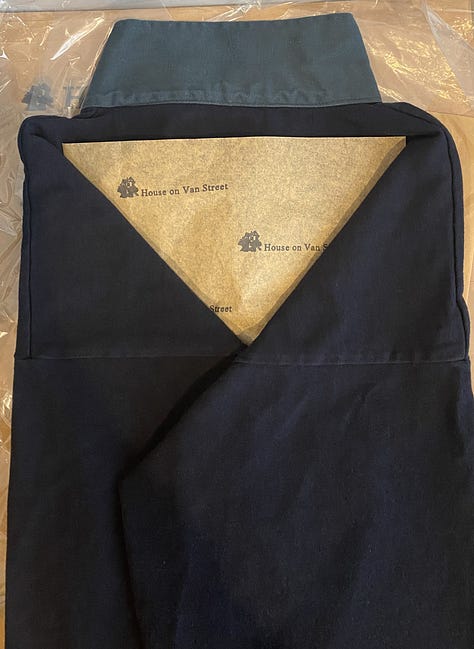


In the first column is a navy blue rugby shirt issued in the 1990’s by The University of Oxford to it’s rugby team. The shirt displays the University’s coat of arms on the front left chest.
The middle column features another rugby shirt issued by The University of Oxford to their students in the mid-1990’s. This shirt proudly features their coat of arms on the front left chest.
The third column highlights an Oxford Athletic Clothing Co. (Est 1992-2005) rugby shirt. In may 2005, the Oxford Athletic Clothing Co. closed their doors for good. Everything that still has their label is the last of it’s kind.
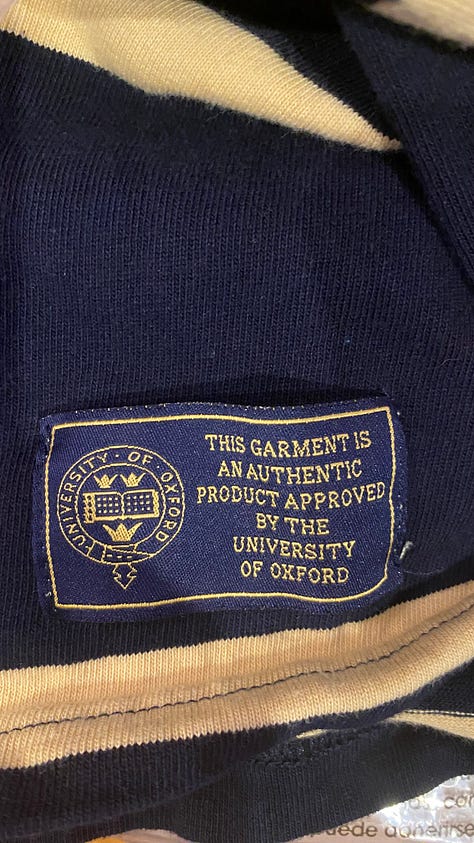
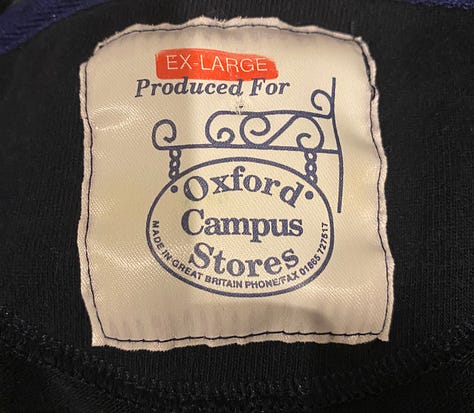

Heraldry Blazoned!
The act of writing out a Coat of Arms, and a language in and of itself.
A blazon uses language that is consistent with its heraldic depictions. For example, The University of Oxford’s blazon writes the act of a book being opened that has seven seals and an inscription on the inside. Some think this could be connected to the book of the Apocalypse. Did someone open the book?
The University of Oxford’s Heraldry Blazoned is:
“Azure, upon a book open proper leathered gules garnished or having on the dexter side seven seals of the last the words DOMINVS ILLVMINATIO MEA all between three open crowns two and one or.”
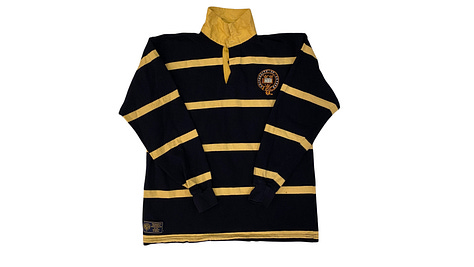


Now, a parallel into Arms, Armor, and Armory!
George Washington established America’s first armory in Springfield in 1777. It’s the oldest one today. It is simply a place where arms (weapons to extend your reach) and armor (a layer of protection) are manufactured for soldiers.
To Arm yourself and others is to extend the reach and ability on or off the battlefield. Armor is protection from aggression, but also decorative for attention and to display rank.
3 Questions:
What is your reach?
How do you arm yourself?
Who is allowed in your armory?
Today for most, the thought of going to war is more like going to work, but on a difficult day after another difficult day or shift after shift with very difficult people. For some, its exploring uncharted territory that’s been purposely avoided.
On those days, I find myself looking for reliability more than anything. I need what works to work. Arming myself may be just putting on my best shirt and good quality pants.
The who, or even sometimes the what, I seem to attract when armed, I would say is my reach. But I find myself being very selective with who I let in my armory. Without a doubt, you will hear the following from some people. I told you to remember some people.
“If I had access to this…” “Why have I never seen you use…” “Is this a real…”
“How did you get a…” “Wouldn’t it have been better if…” “You should…”
Some people want to select the exciting moves in your life, when they’ve made very few in their own. And if it’s not that, then they always seem to be asking too many questions. They don’t understand risk when they haven’t taken many. It can be hard explaining to some people not every answer has words but experiences and patterns. Since some people usually aren’t around during the risk, explaining the atmosphere can be impossible. They have to feel it.
Don’t be some people. Make your own moves.
What if I can’t see my next move?
The University of Oxford established in 1096.
929 years ago they wanted to make known Dominus Illuminatio Mea, “The Lord is my light.” Some quote King David’s Psalm 27:1.
“The LORD is my light and my salvation; whom shall I fear?
The LORD is the strength of my life; of whom shall I be afraid?”
I find myself quoting David’s Psalm 86 and finding direction.





